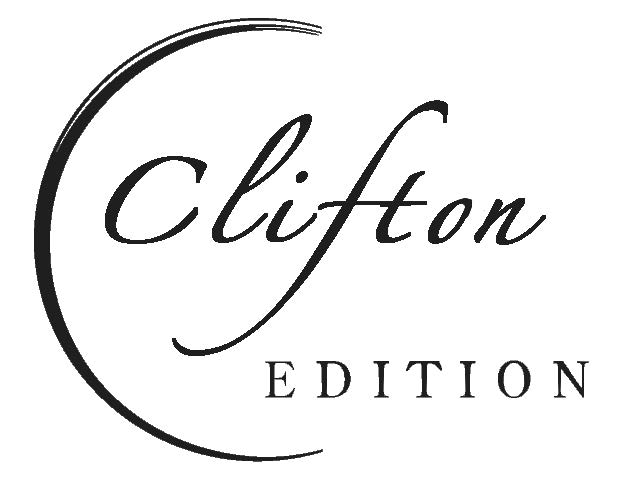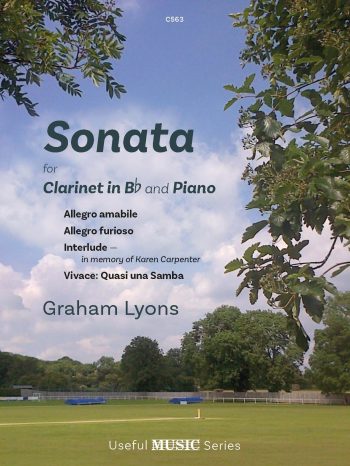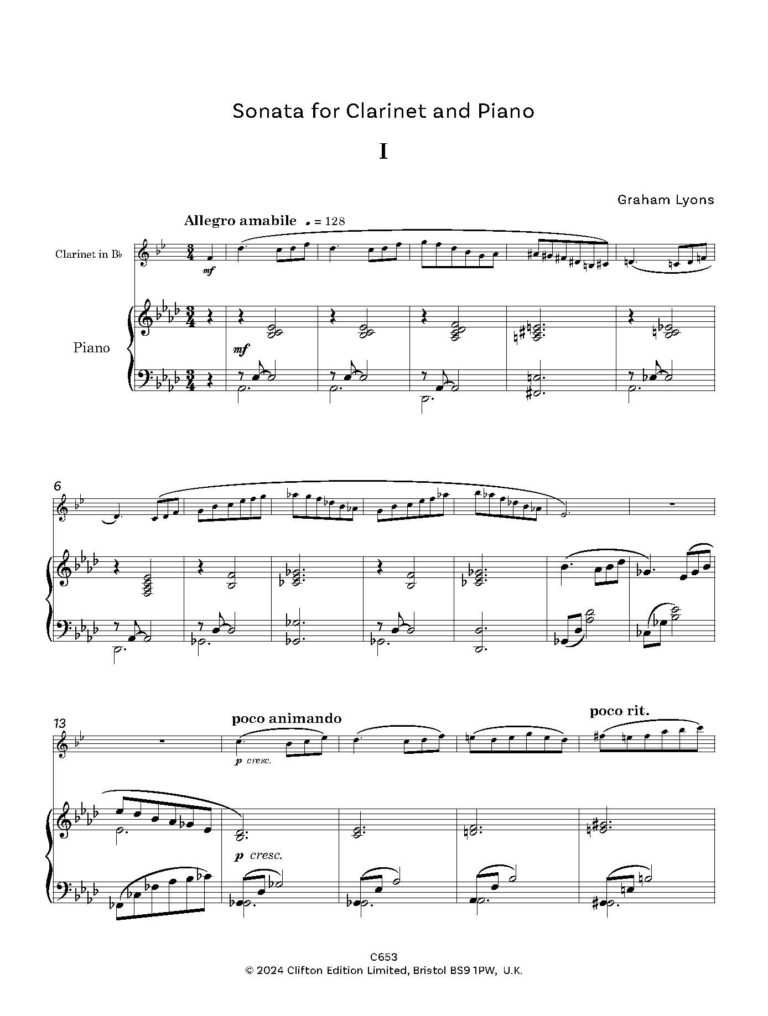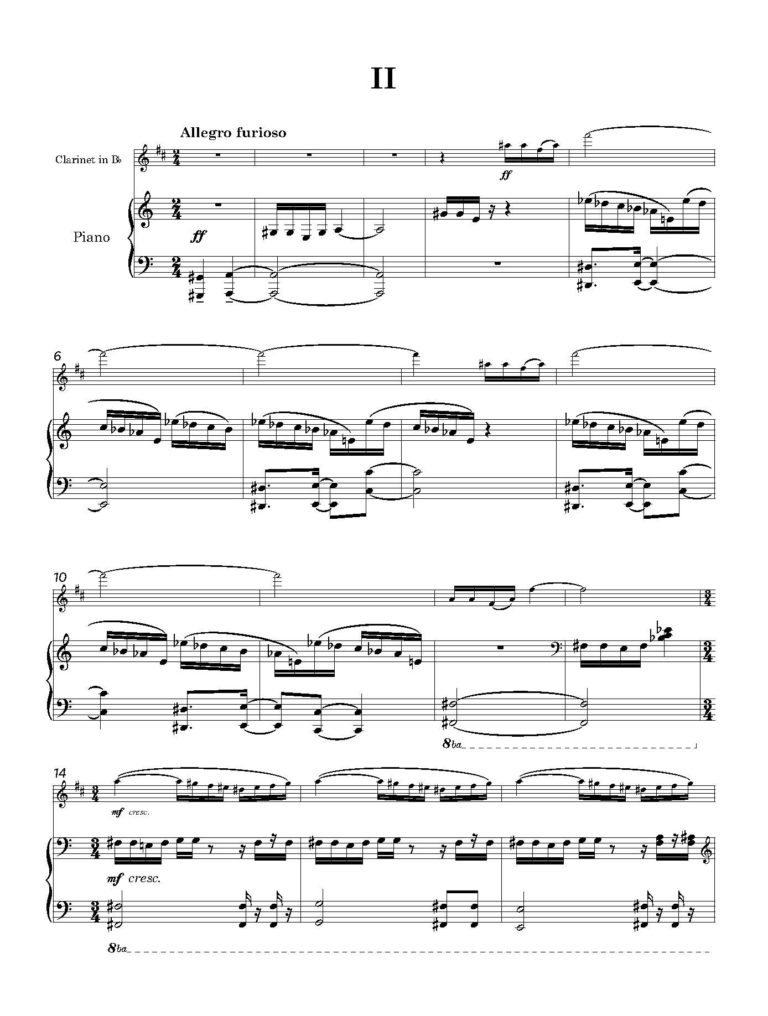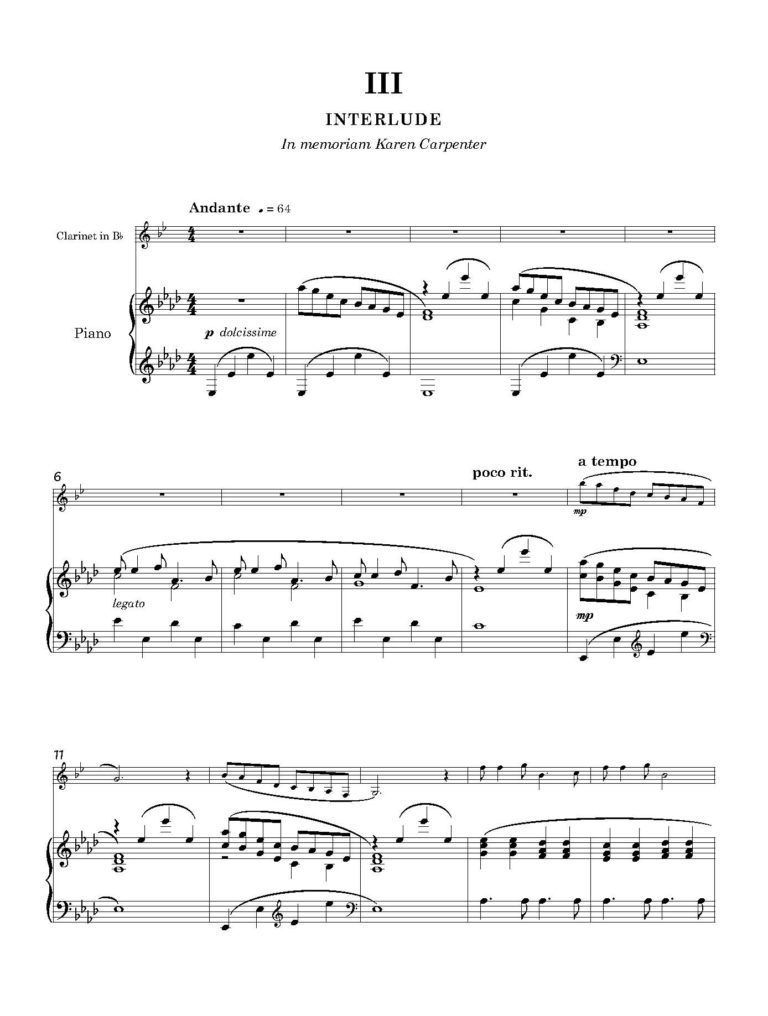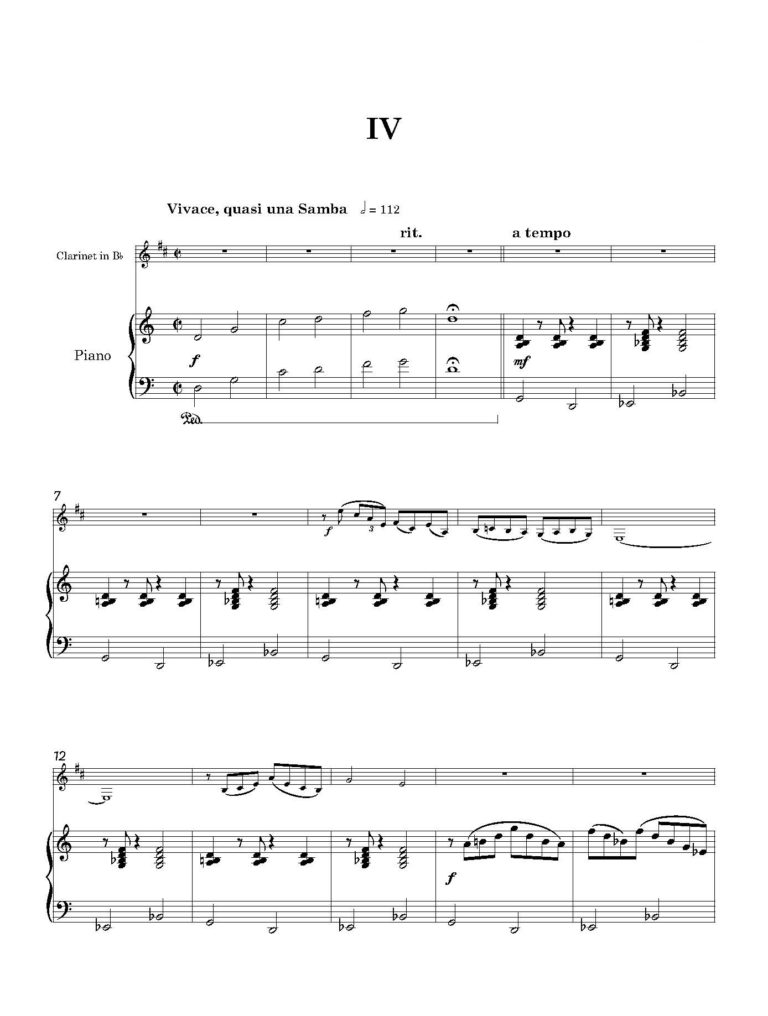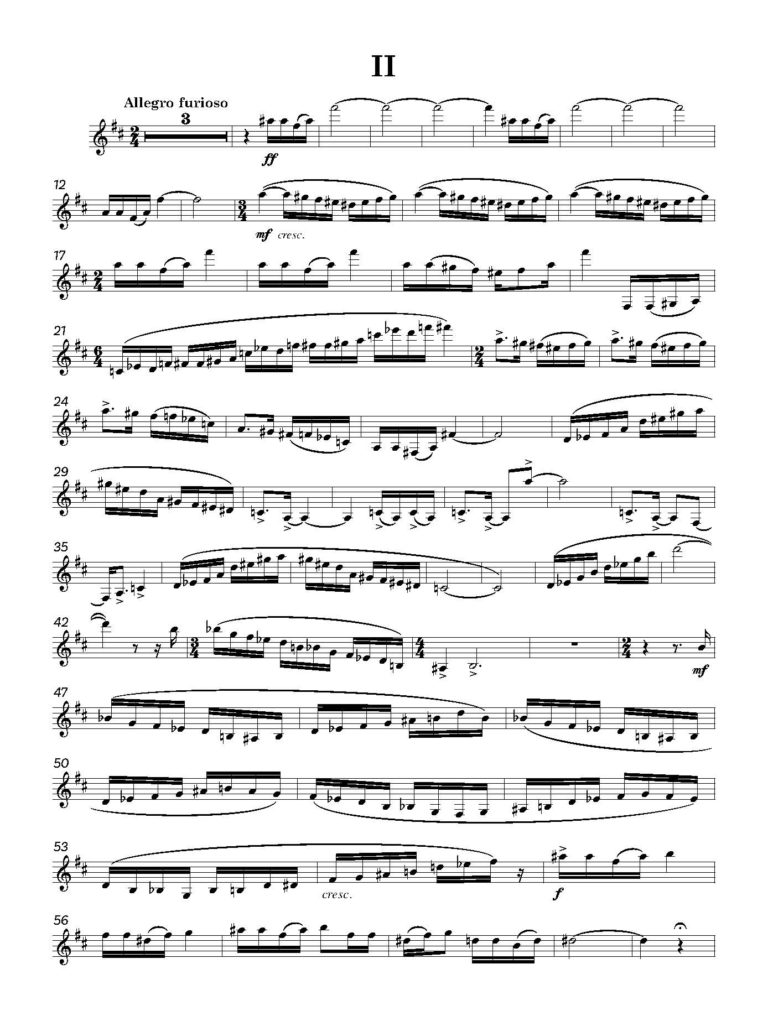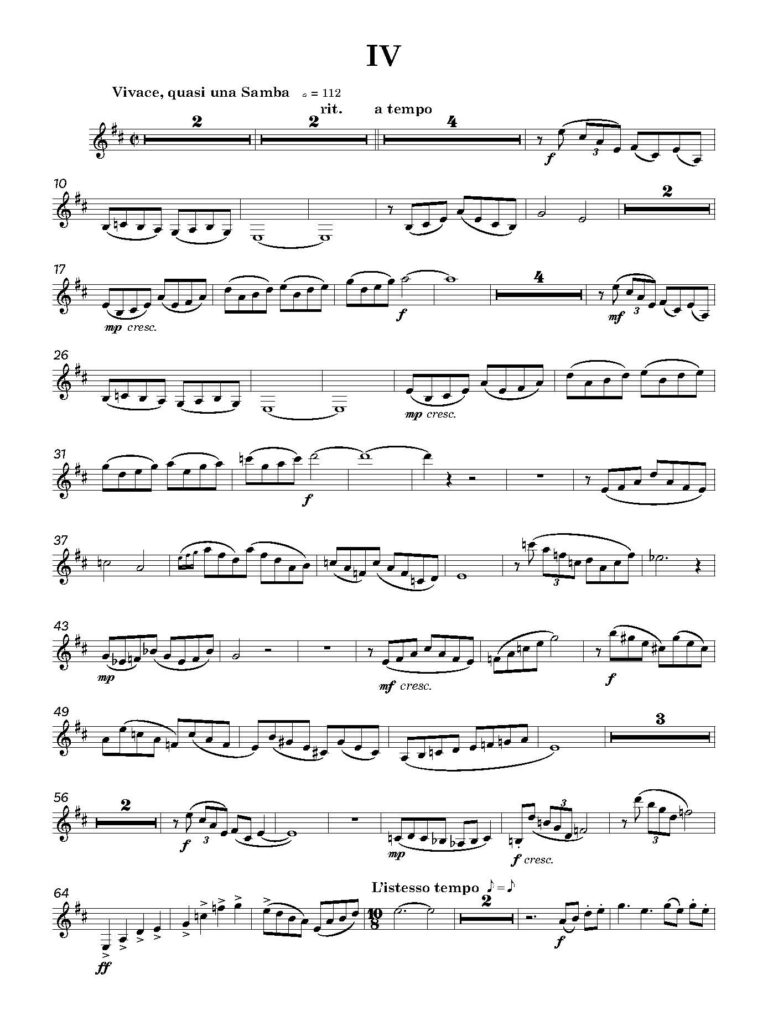Clifton Edition is republishing the educational music of Graham Lyons (Useful Music Series).
The Sonata is contemporary, nevertheless, each piece makes musical ‘sense’ on first hearing.
Although sometimes challenging, the piece is written with care to suit the character and technique of the instrument.
The third movement is written ‘in memory of Karen Carpenter’.
PERFORMANCE NOTES
I Allegro amabile The metronome marks are a guide only. Once you are familiar with the music, feel free to alter the tempo and modify the phrasing to suit your style, your reed, the room acoustic—and even your blood/alcohol level. Trust your judgement. There are no hidden subtleties; what you hear is what you get.
II Allegro furioso This movement is spiky, relentless and threatening. Play with maximum intensity keeping the tension throughout. There are no points of repose—certainly not the pause in bar 60, which should be carefully judged to make the audience wonder what’s going to happen next.
The movement demands as much from the pianist as the clarinettist. If the rhythm falters, excitement with be lost. Practice slowly together until you both know how the parts fit by ear—not by counting. The dovetailing of the parts from bars 93 to 114 needs special attention.
Even if you have mastered the movement technically, do not try to make it sound easy; the feeling of struggle should still be preserved. Keep the audience on the edge of their seats till the final note. Inject the incisiveness of an oboe or D trumpet into your tone.
III Andante The mood here is in complete contrast to the preceeding movement. Play gently and reflectively, and a touch wistfully.
With her arranger and composer brother, Richard, Karen Carpenter was the singing half of a duo called The Carpenters. They were hugely popular in the 60s and 70s of the last century (unless you are reading this in a century later than the 21st!). She had one of the few really original voices in Pop music—warm and unaffected. She died in her early 30s following prolonged Anorexia Nervosa.
The Carpenters’ music has immedate and wide appeal. As a result, it has often been derided as bland and inconsequential. In fact, Richard Carpenter writes expertly using, with skill and taste, complex harmony, modulation, suspensions and pedal notes—and many other devices used in great music.
IV Vivace This is in a Latin American, not Jazz, rhythm. The eighth notes (Brit. quavers) are played as written, not ‘swung’.
Don’t be tempted to take this movement too fast. Try to convey a sense of forward drive but without a hint of a scramble. The 10/8 section should sound as if you have played this meter all your life.
Note to amateur pianists For the ‘cut common’ sections, think of a two-beat main pulse subdivided into eight beats. Practice in strict time at half speed with no special emphasis on syncopated notes. Keep the tempo constant but relaxed, Brazilian – style. The clarinet player should feel that he or she is floating above a bouncing but secure rhythm.
The Sonata was composed in 1986.
Terrific rendition on YouTube – see video below: Laura Gómez (piano) – Francisco José Gil (clarinet)
